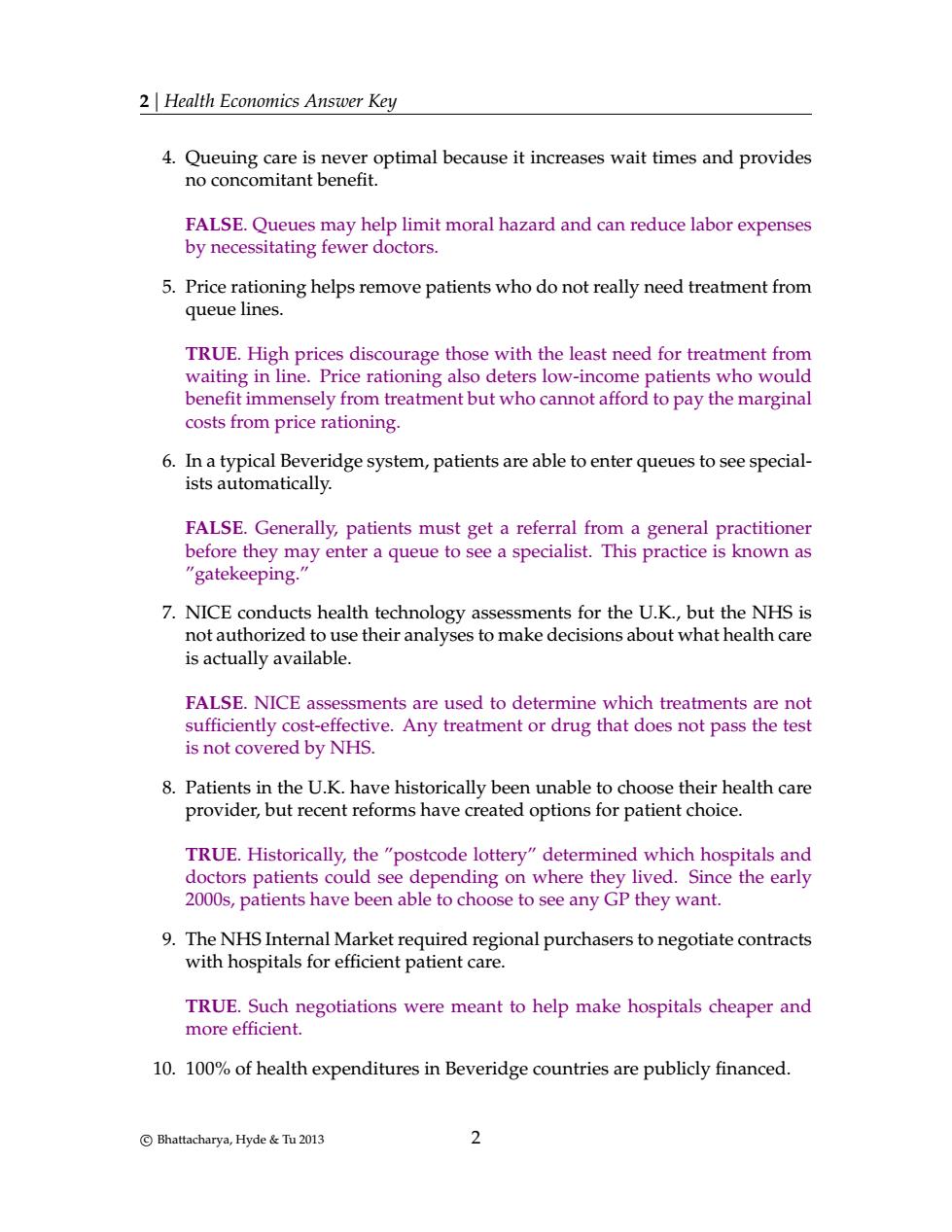正在加载图片...

2 Health Economics Answer Key .Quingcare isnever optimal because it increases wait times and provides FALSE.Queues may help limit moral hazard and can reduce labor expenses by necessitating fewer doctors. 5.Price rationing helps remove patients who do not really need treatment from queue lines. TRUE.High prices discourage those with the least need for treatment from waiting in line.Price rationing also deters low-income patients who would benefit immensely from treatment but who cannot afford to pay the marginal costs from price rationing 6.In a typical Beveridge system,patients are able to enter queues to see special- ists automatically. FALSE.Generally,patients must get a referral from a general practitioner before they may enter a queue to see a specialist.This practice is known as "gatekeeping. 7.NICE conducts health technology assessments for the U.K.,but the NHS is not authorized to use their analyses to make decisions about what health care is actually available. FALSE.NICE assessments are used to determine which treatments are not cost-effective Any treatment or drug that does not pass the test is not covered by NHS. 8.Patients in the U.K.have historically be en unable to cho e their health care provider,but recent reforms have created options for patient choice TRUE.Historically,the "postcode lottery"determined which hospitals and doctors patients could see depending on where they lived.Since the early 2000s,patients have been able to choose to see any GP they want. 9.The NHS Internal Market required regional purchasers to negotiate contracts with hospitals for efficient patient care. TRUE.Such negotiations were meant to help make hospitals cheaper and more efficient 10.100%of health expenditures in Beveridge countries are publicly financed. Bhattacharya,Hyde &Tu 2013 22 | Health Economics Answer Key 4. Queuing care is never optimal because it increases wait times and provides no concomitant benefit. FALSE. Queues may help limit moral hazard and can reduce labor expenses by necessitating fewer doctors. 5. Price rationing helps remove patients who do not really need treatment from queue lines. TRUE. High prices discourage those with the least need for treatment from waiting in line. Price rationing also deters low-income patients who would benefit immensely from treatment but who cannot afford to pay the marginal costs from price rationing. 6. In a typical Beveridge system, patients are able to enter queues to see specialists automatically. FALSE. Generally, patients must get a referral from a general practitioner before they may enter a queue to see a specialist. This practice is known as ”gatekeeping.” 7. NICE conducts health technology assessments for the U.K., but the NHS is not authorized to use their analyses to make decisions about what health care is actually available. FALSE. NICE assessments are used to determine which treatments are not sufficiently cost-effective. Any treatment or drug that does not pass the test is not covered by NHS. 8. Patients in the U.K. have historically been unable to choose their health care provider, but recent reforms have created options for patient choice. TRUE. Historically, the ”postcode lottery” determined which hospitals and doctors patients could see depending on where they lived. Since the early 2000s, patients have been able to choose to see any GP they want. 9. The NHS Internal Market required regional purchasers to negotiate contracts with hospitals for efficient patient care. TRUE. Such negotiations were meant to help make hospitals cheaper and more efficient. 10. 100% of health expenditures in Beveridge countries are publicly financed. c Bhattacharya, Hyde & Tu 2013 2